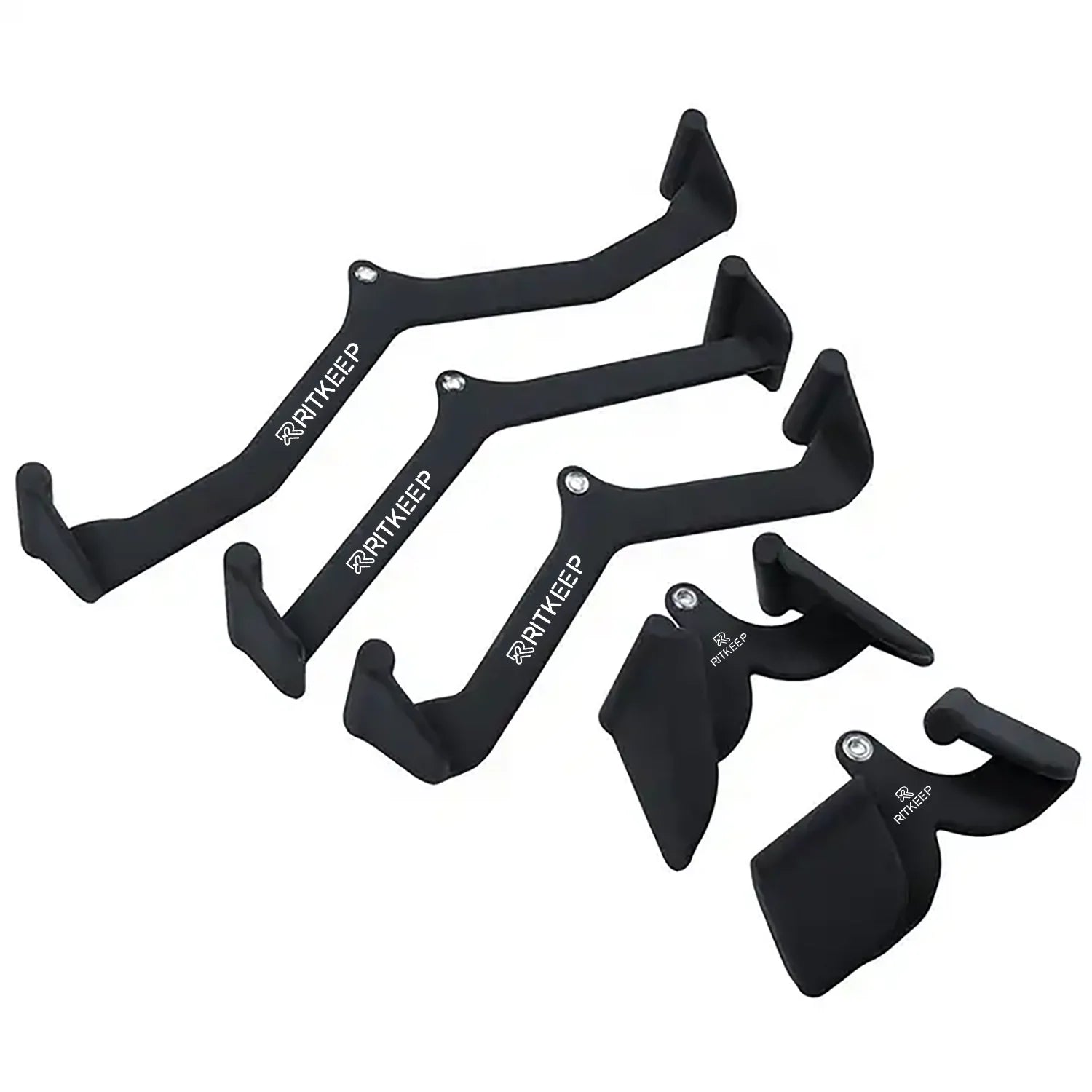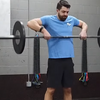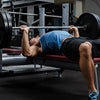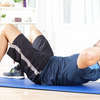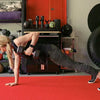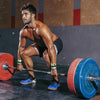Beginners Must See: What Dumbbell Weight Should I Use?
For beginners, choosing the right dumbbell weight is more than avoiding wasted effort — it's key to effective training and building confidence. Too light, and you won't see progress; too heavy, and poor form can lead to injury. The right weight sets a solid foundation for your workouts.
Now that you know the importance of choosing the right weight, let's break it down further. You'll learn how to tailor your weights to different exercise types and how to determine your "perfect weight" through a simple four-step test. Plus, we'll give you some practical tips for setting up your home gym with the right dumbbells!
How to Choose the Right Weight Based on Exercise Type
1. When to Use Lighter Weights
Core-focused workouts (such as Pilates or machine-assisted Pilates movements) are best performed with lighter weights, especially for beginners. Using heavy loads during crunches or leg raises can unintentionally shift the effort to the back and neck muscles, reducing the effectiveness of the exercise. It's recommended that beginners start with no added weight and focus first on mastering proper form.
Movements that involve lifting the arms overhead—such as most tricep exercises, shoulder presses, or straight-arm pulses—should also be done with lighter weights. This helps maintain a stable, neutral core position throughout the entire range of motion.
2. When to Use Moderate Weights
Full-body workouts and compound movements generally call for moderate weights. These exercises require your core stabilizers to work in balance while engaging both upper- and lower-body muscles. Examples include weighted lunges and squats.
Other movements that recruit multiple muscle groups—such as single-arm dumbbell rows, dumbbell presses, or medicine ball slams—are also best suited for moderate weights.
3. When to Use Heavier Weights
Heavier weights are appropriate for exercises that demand maximum muscle engagement but not necessarily explosive speed. From the very first set, you should feel your muscles working hard. Lower-body training is especially suited for heavier loads since the legs contain the body's largest and strongest muscle groups. To effectively push them to fatigue—and achieve goals such as building strength, endurance, or muscle growth—you'll need to lift heavier.
Classic examples include deadlifts and variations of squats, both of which benefit from heavier resistance.
How to Determine Your "Perfect Weight" (Four-Step Test)
Step 1: Pick up a dumbbell and perform 10 repetitions
Start with a weight that feels comfortable, whether it's 5 lbs, or 10 lbs. Don't worry if you're unsure — the following steps will help you figure it out! Hold the dumbbell in one hand and perform 10 bicep curls.
Step 2: Assess the difficulty and adjust the weight
Was it too easy or too difficult to complete the 10 reps? If you didn't feel any "burn" in your muscles, increase the weight by 2 lbs. If you struggled midway through, reduce the weight by 2 lbs.
Step 3: Do another 10 reps and feel the muscle burn
Using the adjusted weight (or the same weight if it initially felt right), perform another set of 10 bicep curls. Were the last 5 reps challenging? If yes, stick with this weight; if not, increase it by a few pounds.
Step 4: Final set of 10 reps — muscles should feel fatigued
Perform the third and final set of 10 bicep curls. Your muscles should feel noticeably fatigued, requiring effort to complete the set. If so, congratulations — you've found your ideal weight!
Practical Tips for Choosing Dumbbells at Home
1. Prioritize Adjustable Dumbbells
If your budget and space allow, adjustable dumbbells (which let you add or remove weight plates) are much more cost-effective than fixed dumbbells. For example, a set that adjusts from 2 lb to 20 lb can cover light, medium, and heavy needs without requiring you to buy new pairs as you progress. They save both space and money.
2. Don't Aim for "All at Once"
Beginners often think, "I'll just buy heavy ones right away so I don't have to upgrade later." But starting with weights that are too heavy usually leads to poor form—like arching your back or shrugging your shoulders—which can cause injuries to your lower back or shoulders. A smarter approach is to begin with light and medium weights. After 1–2 months, if you can perform 15 reps easily with your current set, then it's time to add heavier dumbbells.
3. Match Weights to Different Muscle Groups
Different body parts require different weight ranges—lighter weights for arm exercises like bicep curls, and heavier ones for leg exercises like squats. When buying, think in terms of "covering all major muscle groups." For example, a single adjustable set that ranges from 2–20 lb works well, or if you prefer fixed weights, something like 5 lb + 10 lb + 15 lb will generally cover arms, shoulders/back, and legs.
A Smarter Choice: Adjustable Dumbbells
Recommended: RitKeep Adjustable Weights Dumbbells
The RitKeep Adjustable Weights Dumbbells revolutionize home training by combining multiple weights into one compact dumbbell set. This gives you the flexibility to train at any level—perfect for both beginners and advanced lifters.
Key Features
- Quick weight adjustment with a selector system
- Knurled handle for a secure grip during intense sessions
- Supports a wide variety of exercises (curls, tricep extensions, rows, presses)
- Available in 65lb and 95lb versions
Weight Options
- 65lb version: 6.5 – 65lb (15 settings)
- 95lb version: 9 – 95lb (15 settings)
👉 If you're looking for a single dumbbell set that grows with your fitness journey, RitKeep Adjustable Dumbbells are the ideal solution.

Conclusion
Choosing the right dumbbell weight is simpler than it seems. With a little practice and adjustment, you can easily find the weight that works best for you. The four-step test is an effective and easy way to ensure you're maximizing your workout. As you get stronger, having a versatile set of dumbbells, like the RitKeep Adjustable Dumbbells, will help you progressively increase intensity and target all muscle groups. Remember, consistency and proper form are key. Start with a manageable weight and gradually increase it as your strength improves.
Keep pushing, and enjoy your fitness journey!
Best Home Gym Gear in RitKeep
These are our most popular home gym machines — combining Smith Machine and Power Rack in one. Perfect for both guided and free weight training to support your everyday fitness goals.
PMAX 5600 All-In-One Smith Machine - Integrated Weight System
✔️ 6 IN 1 Gym Station
✔️ With 75 KG Weight Stack On Each Side
✔️ Feel the Burn Through 80+ Exercises
PMAX 4750 Dual Plate Loaded Multi Functional Smith Machine
✔️ Fuel Your Workout with 100+ Exercises
✔️ Dual Independent Pulley System
✔️ Removable Jammer Arms & Leg Extension
Destroyer M10 ALL-IN-ONE Home Gym Power Rack With Pulley System
✔️ Crossover Cable Pulley System
✔️ Heavy-Duty Multi-Functional Rack
✔️ Offering over 80+ exercises





